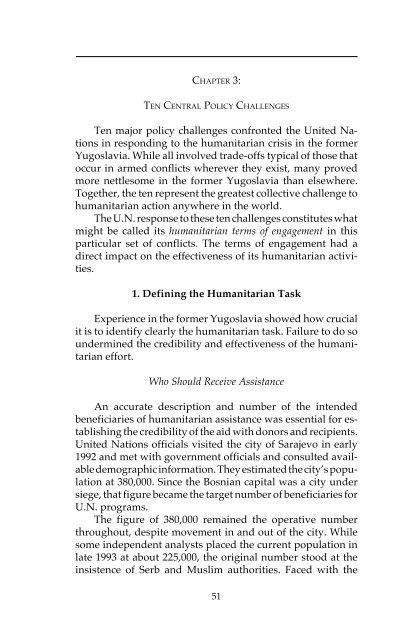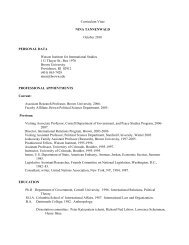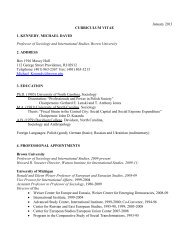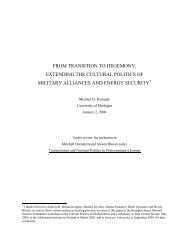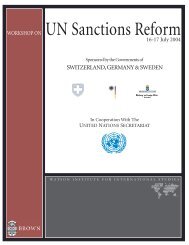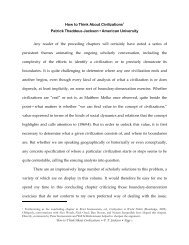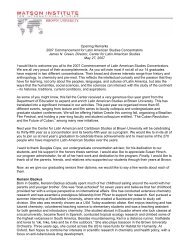op 18 front pages-converted - The Watson Institute for International ...
op 18 front pages-converted - The Watson Institute for International ...
op 18 front pages-converted - The Watson Institute for International ...
Create successful ePaper yourself
Turn your PDF publications into a flip-book with our unique Google optimized e-Paper software.
CHAPTER 3:<br />
TEN CENTRAL POLICY CHALLENGES<br />
Ten major policy challenges con<strong>front</strong>ed the United Nations<br />
in responding to the humanitarian crisis in the <strong>for</strong>mer<br />
Yugoslavia. While all involved trade-offs typical of those that<br />
occur in armed conflicts wherever they exist, many proved<br />
more nettlesome in the <strong>for</strong>mer Yugoslavia than elsewhere.<br />
Together, the ten represent the greatest collective challenge to<br />
humanitarian action anywhere in the world.<br />
<strong>The</strong> U.N. response to these ten challenges constitutes what<br />
might be called its humanitarian terms of engagement in this<br />
particular set of conflicts. <strong>The</strong> terms of engagement had a<br />
direct impact on the effectiveness of its humanitarian activities.<br />
1. Defining the Humanitarian Task<br />
Experience in the <strong>for</strong>mer Yugoslavia showed how crucial<br />
it is to identify clearly the humanitarian task. Failure to do so<br />
undermined the credibility and effectiveness of the humanitarian<br />
ef<strong>for</strong>t.<br />
Who Should Receive Assistance<br />
An accurate description and number of the intended<br />
beneficiaries of humanitarian assistance was essential <strong>for</strong> establishing<br />
the credibility of the aid with donors and recipients.<br />
United Nations officials visited the city of Sarajevo in early<br />
1992 and met with government officials and consulted available<br />
demographic in<strong>for</strong>mation. <strong>The</strong>y estimated the city’s p<strong>op</strong>ulation<br />
at 380,000. Since the Bosnian capital was a city under<br />
siege, that figure became the target number of beneficiaries <strong>for</strong><br />
U.N. programs.<br />
<strong>The</strong> figure of 380,000 remained the <strong>op</strong>erative number<br />
throughout, despite movement in and out of the city. While<br />
some independent analysts placed the current p<strong>op</strong>ulation in<br />
late 1993 at about 225,000, the original number stood at the<br />
insistence of Serb and Muslim authorities. Faced with the<br />
51


